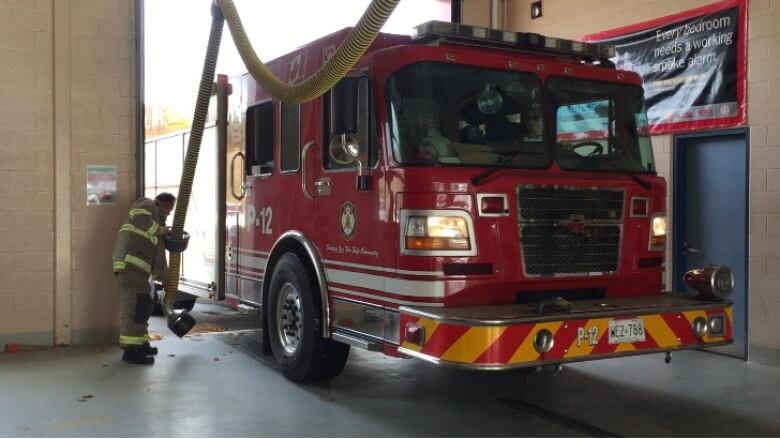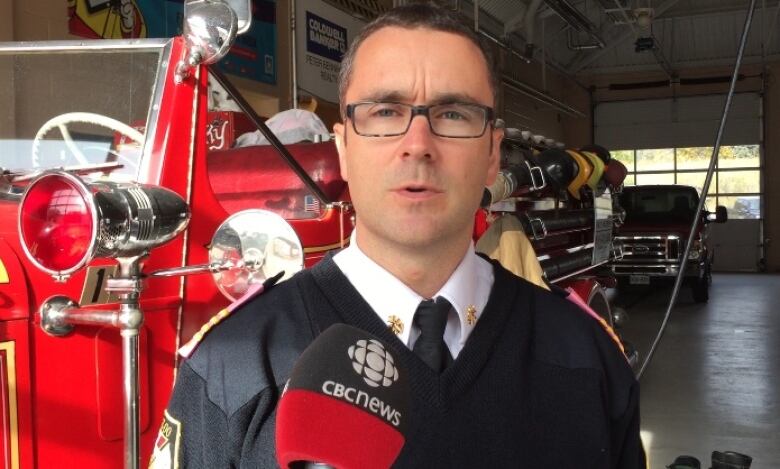Firefighters undergo extensive decontamination process after blaze
Firefighters can be exposed to around 70 million different types of chemicals over job lifetime

Whether it's a fire with heavy smoke or one caused by a pot on a stove, firefighters in Waterloo region undergo a multi-step, hour-longdecontamination process after returning from the scene of a blaze.
Years of research, including a recent paper by the University of Ottawa, has warned of thedangerous toxins firefighters can absorb at the scene of a fire.

Some of those chemicals include benzene, hydrogen cyanide and carbon monoxide.
Schubert said many of the chemicals are found in modern furnishings in our homesand exposure can happen when fighting a fire from the inside or outside of a structure, and even after the flames have been extinguished.
"They're often exposed to toxins and chemicals during firefighting operations. In addition when they are performing rescue operations where they actually have to go into a dwelling or structure," said Schubert.
"They're exposed after the fact when they're taking off their bunker gear. And then we have our fire prevention officers who are conducting the investigations after a fire who are also exposed."

- Lung cancer added to Ontario firefighter health coverage
- Hamilton firefighters claiming cancer at twice provincial rate
- Feds announce Firefighters' National Memorial Day
The cleaning process
Fully decontaminatingequipment and gear can take up to an hour and all firefighters go through themulti-step decontamination process, which includes:
- Placing all protective equipment that's been exposed to toxins in a plastic bag before re-entering the cabin in the fire truck.
- Returning all contaminated equipment, such as fire hoses, to the rear of the fire truck, separate from the crew cabin.
- Usingwet wipes to clean their head, neck, face, and armpits to remove surface toxins.
- Showering after responding to a fire.
- Cleaning andlaundering their protective jacket, pants, helmets and goggles to get rid of any toxins.
- Cleaning the carpet and seatsin the fire truck cabin at least once a month.












_(720p).jpg)


 OFFICIAL HD MUSIC VIDEO.jpg)
.jpg)



























































































